Matterhorn Alpine Crossing lift unveiled in Zermatt
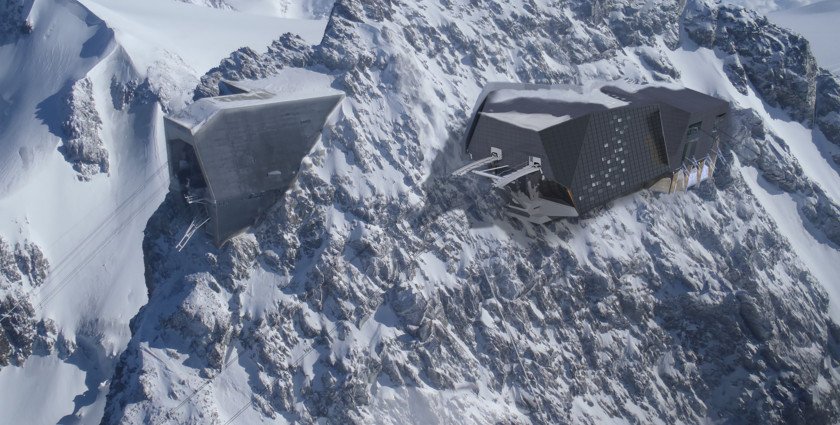

Words Iain Martin
You know the Matterhorn, even if you’ve not seen it in person: it’s that pyramidic peak that appears everywhere from Toblerone bars (albeit not for much longer) to boxes of exclusive Caran d’Ache pencils.
So, if you’ve not seen it yet with your own eyes, then it’s probably on your bucket list, and the opening of the new Matterhorn Glacier Paradise II cable car is just one more reason to visit.
The new lift completes the much-vaunted Matterhorn Alpine Crossing, which connects Zermatt in Switzerland with Cervinia in Italy, via six lifts on a 90-minute journey. It’s always been possible to ski between the two, but now for the first time, the link is open to all tourists.
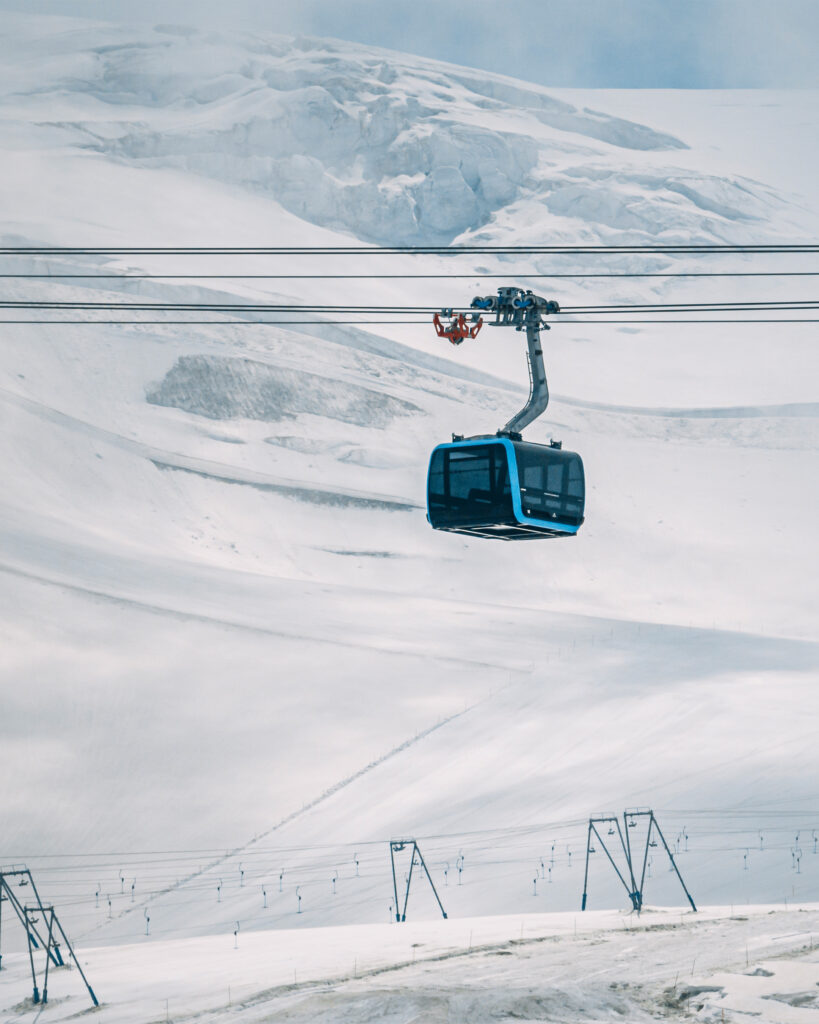
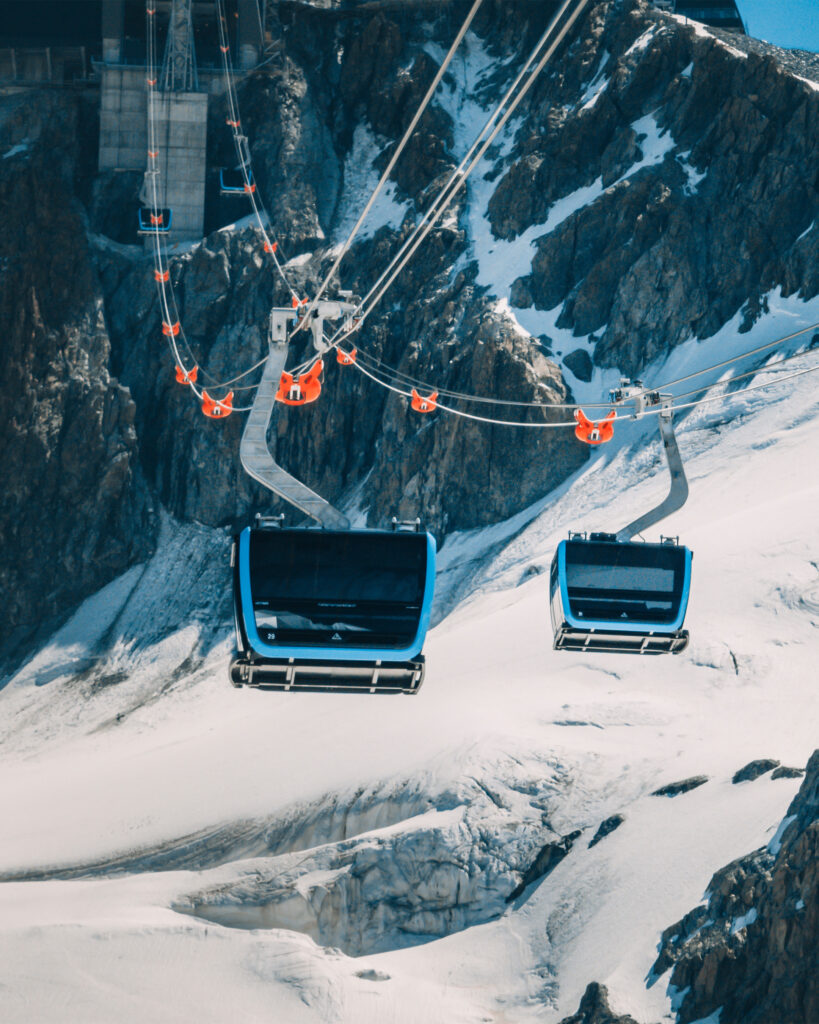
This final stage is a spectacular feat of modern engineering. The logistics of building a cable car station at 3800m above sea level are phenomenally complicated.
Before any work could start, a team of abseilers had to slide down the face of the Klein Matterhorn 007-style and bolt in netting to prevent rockfalls. Then five tonnes of explosive was used to blast away more than 10,000 cubic metres of rock.
All this had to happen before the foundations could be laid. Even that process is complicated. Concrete can only be made at temperatures above 5°C, so it had to be mixed lower down on the Italian side at Laghi Cime Blanche (2835m), then carried by Air Zermatt helicopters over several thousand circuits to the construction site.
It was a demanding, physical job for the team working at Klein Matterhorn. Due to the low oxygen content of the air at such high altitude, even the fittest can only perform at 80% of their normal capacity.
Site manager Anton Lauber wasn’t being hyperbolic when he said, “There’s no building site like this anywhere in the world.”
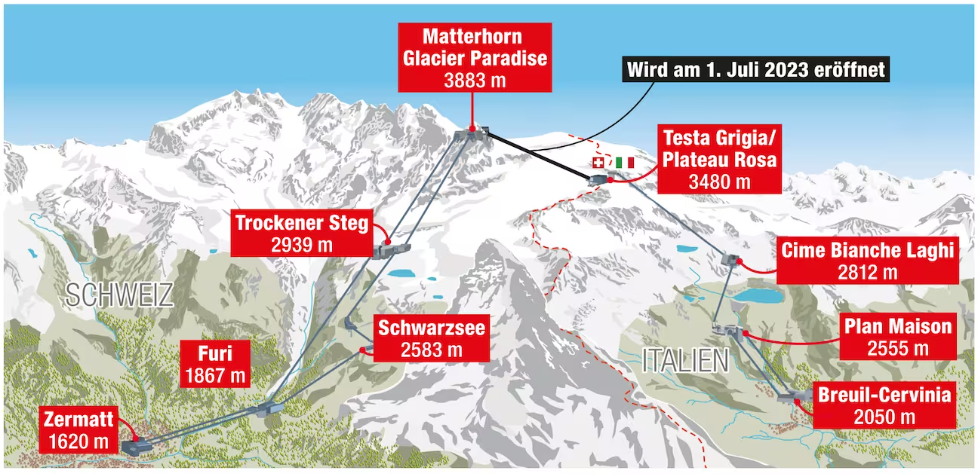
The Matterhorn Glacier Paradise II connects Klein Matterhorn at 3800m and Testa Grigia at 3458m in one single 1.6-kilometre span. The views are outstanding and the height terrifying. When I took it last week, we passed over racers honing their slalom skills on the glacier’s ski area almost 200m directly below us.
There are just ten cabins, with sleek lines and a contemporary style, as you’d expect from designers Pininfarina, whose other projects have included work for Ferrari and Alfa Romeo. This is no budget project, as is obvious from the heated leather seats in each gondola to the swish escalators that only start as you approach them.
The Matterhorn Alpine Crossing is more than just a transportation solution. It has cost Zermatt Bergbahnen over CHF67 million to date and with single tickets from Cervinia to Zermatt costing from CHF137 (GBP123), it’s evidently not aimed at the ‘average’ traveller.
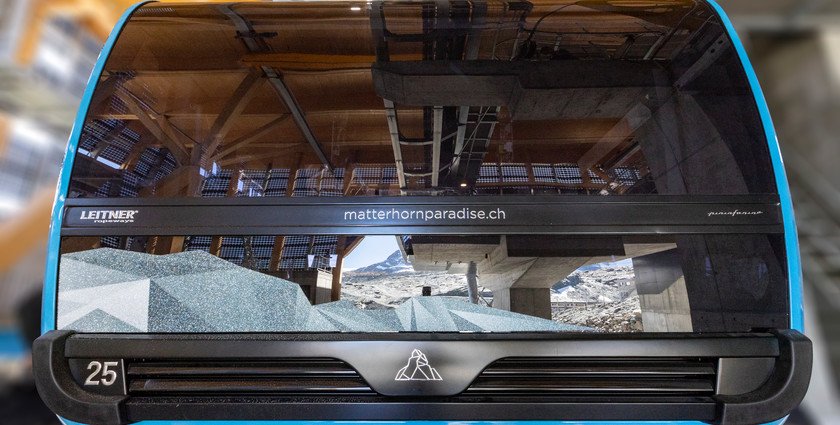
Markus Hasler, CEO, confirmed at the opening last month that their pricing strategy was not about “promoting mass tourism.”
His colleague Marc Lagger agreed when he spoke to me last week: “We are mainly aimed at the Asian market, targeting individual guests and small groups.”
“It’s a new route. We are trying to divert the stream of tourists that currently go from Italy directly to France,” Lagger said. “We want to get them to travel over the Alps, via Zermatt, with a stop in front of the Matterhorn.”
Zermatt Bergbahnen expect the Matterhorn Alpine Crossing to generate CHF40 million (£36 million) in annual revenues, but the good news for skiers is that all sections are included in an International Ski Pass for the Zermatt/Cervinia ski area – a bargain in comparison at just CHF97 (£87) per day.
Even that might sound expensive, but some things in life, like a view of the Matterhorn, have to be experienced at least once. To paraphrase Jennifer Aniston, you should take that trip to Zermatt “because you’re worth it”.
Take a look at the Matterhorn Alpine Crossing in action:
Iain stayed at the Alpine Hotel Perren and travelled within Switzerland by train using a Swiss Pass